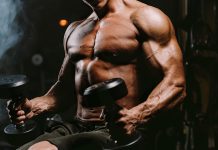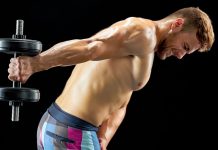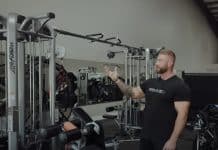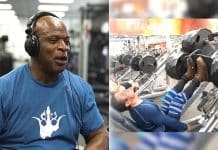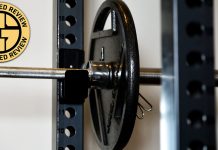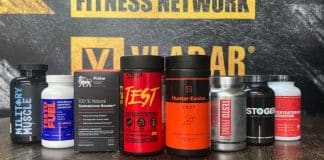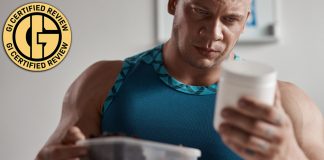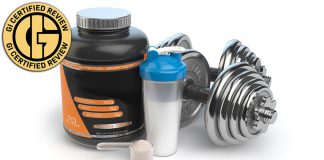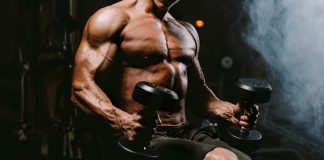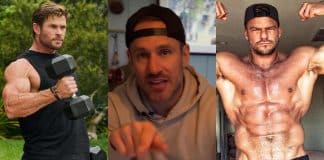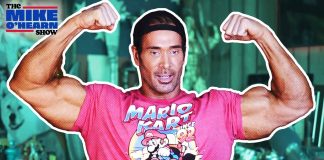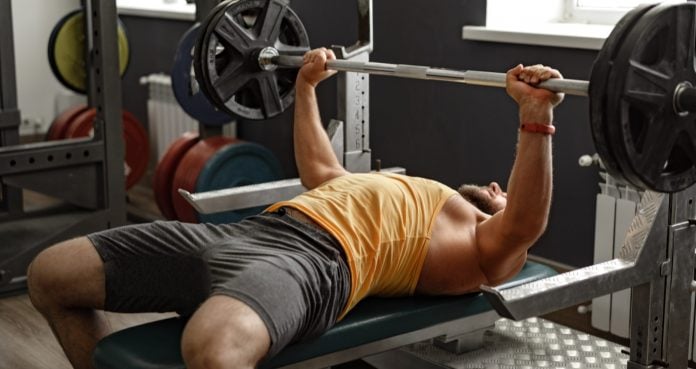
Keeping your elbows in during the bench press will protect your shoulder joints.
The bench press is ideal for lifters looking to strengthen, develop, and sculpt their upper bodies. However, it’s fascinating to note that the outcomes of this exercise can vary significantly based on your execution techniques, particularly the positioning of your hands and elbows. A 2017 study delves into various bench press techniques and their impacts on muscle activity and athletic performance (1).
As a compound movement, the bench press requires the coordination of multiple joints, primarily focusing on the elbows and shoulders. This article will explore how these movements target key muscle groups — the chest, deltoids, and triceps.
Observing seasoned professionals, one can’t help but notice their meticulous attention to elbow positioning during the bench press. It’s common to hear them emphasize this aspect as a critical factor in maximizing muscle development. This article aims to shed light on the significance of elbow positioning in enhancing the bench press’s effectiveness after a brief overview of the bench press technique itself.
How to Do the Traditional Bench Press
Different bench press variations include the flat (traditional), decline, and incline bench press. These routines target various parts of the chest. However, returning to the basics, here’s a reminder of how to correctly do the traditional bench press.
- Lie flat on the bench using an overhand grip on the bar. Your arms should be slightly wider than shoulder-width apart, and your feet should be driven firmly into the floor.
- Pull your shoulder blades back, brace your core, and lift the barbell from the rack, extending your arms and elbows fully. This is your starting position.
- Take a deep breath and, with your core still braced, slowly lower the bar close to your mid-chest.
- Next, exhale and press the bar up, fully extending your elbows and arms back to the starting position, completing one rep.
- Repeat steps three and four for as many reps as you desire.
Benefits
The bench press is effective for upper body development and building mass, so it’s popular with bodybuilders and other athletes. Here are some essential benefits of the bench press.
Upper Body Development
Performing this exercise develops your upper body. The target muscles include the pecs, shoulders, and arms. The bench press induces muscle hypertrophy in these muscles, increasing their muscle mass.
Upper Body Strength
This compound exercise involves the constant motion of joints, strengthening and improving their range of motion. As a result, your entire upper body strength will increase.
Better Coordination & Balance
Controlling the equipment (barbell or dumbbell) is essential when performing the bench press. You must brace your core muscles to maintain body stabilization and balance. This process puts them under constant tension, strengthening them. Stronger core muscles lead to better body posture and form and could help prevent injuries.
Improved Bone Structure
Bench presses are good skeletal-supporting exercises. This exercise works on multiple joints, strengthening and increasing their resistance, making stronger and healthier bones. Research proves that weight exercises increase bone mineral density, improving the quality of life of people with osteoporosis (2).
Different Bench Press Elbow Positions
The key movements when performing the bench press include shoulder flexion (moving your shoulders from their sides straight above your head) and elbow extension (extending your arms from a folded position). For this reason, your hand position and grip width are essential, especially if you want to work on different muscle groups to increase muscle hypertrophy. Studies demonstrate the effects of grip width on target muscles and the extent to which they strengthen during bench press exercises (3).
Your bench press elbow position is also essential when doing a bench press. It could affect what muscles you specifically target or place more tension on. Here’s a list of the different bench press elbow positions and how they work different muscles.
Elbows In
Bringing your elbows in during the bench press changes the movements of the shoulders from horizontal adduction to flexion. This induces more muscle growth in your anterior delts (front shoulders) and increases the range of motion in your triceps. There is less movement in your chest muscles when your elbows are in during the bench press.
Elbows Out
Bringing out your elbows during this exercise changes the movement of your shoulders to horizontal adduction with less flexion. Your pecs experience greater muscle hypertrophy and activation. Experts recommend using lighter weights in this position because it primarily shifts tension to the anterior delts.
45 Degree Elbows
Placing your elbows at 45 degrees activates the pecs, delts, and arm muscles together. It also reduces the extra shoulder tension, allowing you to lift heavier. Maintaining a 45-degree elbow angle at the bottom of your bench press is a great way to protect your shoulders and avoid injuries.
Wrapping Up
Remember that varying elbow positions during the bench press target different muscle groups. To achieve your fitness goals, select the appropriate elbow position. For those looking to engage their pectoral muscles, an elbows-out (flare) position is ideal. Conversely, an elbows-in position is recommended if you focus on strengthening the triceps and anterior deltoids.
Identify the technique that suits your objectives and adjust the weight accordingly to maximize the benefits of your upper body workout. This might involve opting for a lighter weight when using the elbows-out position or choosing a 45-degree elbow angle to safeguard your shoulders. Additionally, ensure you have a spotter during these technical exercises to maintain safety.
Follow us on Instagram, Facebook, and Twitter for more fitness tips!
References
- Saeterbakken, A. H., Mo, D. A., Scott, S., & Andersen, V. (2017). The Effects of Bench Press Variations in Competitive Athletes on Muscle Activity and Performance. Journal of human kinetics, 57, 61–71. https://doi.org/10.1515/hukin-2017-0047
- Shanb, A. A., & Youssef, E. F. (2014). The impact of adding weight-bearing exercise versus nonweight bearing programs to the medical treatment of elderly patients with osteoporosis. Journal of family & community medicine, 21(3), 176–181. https://doi.org/10.4103/2230-8229.142972
- Saeterbakken, A. H., Stien, N., Pedersen, H., Solstad, T. E. J., Cumming, K. T., & Andersen, V. (2021). The Effect of Grip Width on Muscle Strength and Electromyographic Activity in Bench Press among Novice- and Resistance-Trained Men. International journal of environmental research and public health, 18(12), 6444. https://doi.org/10.3390/ijerph18126444



